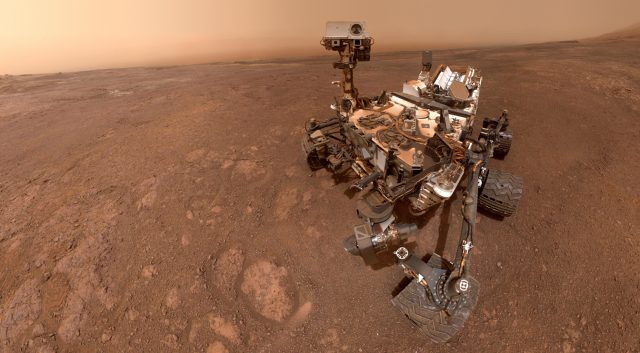It’s a massive undertaking to get a rover to the surface of Mars, so NASA designs its robots to last for at least a couple of months. Luckily, most of them operate for much longer. Opportunity was recently declared lost after 15 years on the red planet. Curiosity is still going strong after more than
It’s a massive undertaking to get a rover to the surface of Mars, so NASA designs its robots to last for at least a couple of months. Luckily, most of them operate for much longer. Opportunity was recently declared lost after 15 years on the red planet. Curiosity is still going strong after more than six years, but there was a bit of a scare earlier this month. NASA says it has verified the rover is fully operational, and it’s resuming science operations.
Curiosity landed on Mars in 2012 and began exploring Gale crater. By 2014, it was climbing the slopes of Mount Sharp to get a better idea of the planet’s geological history. The rover has encountered some bumps along the way, including earlier this month when it failed to boot up successfully. This sent Curiosity into safe mode as NASA evaluated its condition.
NASA announced on February 22nd that it had brought Curiosity out of safe mode, successfully completing the bootup sequence 30 times. However, it wasn’t ready to continue with the mission just yet. This wasn’t the first computer error to hit Curiosity. Last year, the rover’s computer got stuck in a bootloop, forcing NASA to flip to the backup system. Luckily, the rover was designed with two identical computers for just this reason.
Naturally, NASA treats any potential sign of system failure on the rover as a serious matter. There’s no way to swap components or even give it a good therapeutic kick from millions of miles away. The agency opted to gather more information on the fault before resuming the mission.

The Glen Torridon region of Mount Sharp is rich in clay minerals.
We still don’t know exactly what caused the failed boot-up sequence on February 15th. NASA’s update says that all systems are working normally, and the rover hasn’t experienced any further issues during testing. Engineers are still studying the incident, but NASA is now comfortable returning Curiosity to full operational status.
Curiosity is currently studying a region known as Glen Torridon, which orbital observations have revealed to be rich in clay minerals. Clay usually forms in the presence of water, which is of great interest to the science team. Curiosity is ideally suited to studying the geology of clay deposits. The next rover, currently only known as Mars 2020, will focus on searching for signs of life on the red planet.
Source: Extreme Tech

































Leave a Comment
You must be logged in to post a comment.